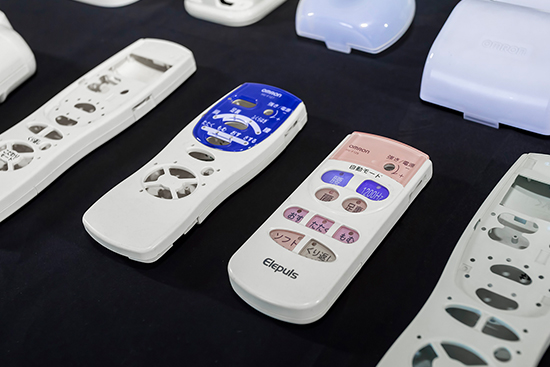Injection molding can use various plastic materials, including thermoplastic materials such as polyethylene (PE), polypropylene (PP), polystyrene (PS), polyvinyl chloride (PVC), polycarbonate (PC), etc. Thermoplastic melts when heated, solidifies after cooling, and can be repeatedly heated to form. Thermosetting plastics: such as phenolic resin, epoxy resin, etc. Thermosetting plastics undergo chemical reactions when heated and cannot be melted again after solidification. Elastic materials: such as thermoplastic elastomers (TPE), silicone rubber, etc. Elastic materials have good elasticity and flexibility, and are commonly used in the production of seals, hoses, etc.
With the continuous advancement of technology, injection molding is also developing towards higher efficiency, environmental friendliness, and intelligence. For example, micro injection molding technology can produce micro precision parts, suitable for the medical and electronics industries; Green injection molding technology focuses on using biodegradable materials and reducing energy consumption; Intelligent injection molding technology achieves real-time monitoring and optimization of the production process by introducing the Internet of Things and big data analysis.
What are the remedial measures for deformed injection molded products during injection molding in Dalian?
For deformed injection molded products, corresponding remedial measures can be taken from physical correction, post-treatment, surface treatment, etc. according to the degree of deformation, product characteristics, and specific usage requirements. The following is a specific introduction:
Physical correction
Mechanical correction: For injection molded products with simple shapes and minimal deformation, mechanical tools can be used for correction. Apply external force to the product using fixtures, molds, etc. to restore it to a shape close to the design. Fix the deformed plastic sheet with a flat fixture, apply appropriate pressure, and maintain it for a period of time. Utilize the elastic recovery characteristics of the material to gradually restore its flatness.
Thermal correction: Using the thermoplasticity of plastic, heat the deformed product to soften it, then apply external force to restore it to its correct shape, and then cool and shape it. For some thin-walled injection molded products, they can be heated in an oven at an appropriate temperature, softened, and then quickly placed on a flat mold or platform to cool and solidify.
Post processing
Annealing treatment: Place the deformed injection molded product in an oven or hot water at a certain temperature for a period of time to fully release the internal stress of the product, and then slowly cool it to eliminate deformation caused by internal stress. Generally speaking, the annealing temperature of crystalline plastics is 10-20 ℃ below their melting point, while the annealing temperature of amorphous plastics is 10-20 ℃ above the glass transition temperature.
Humidity control treatment: For some plastics with strong moisture absorption, such as polyamide (nylon), by placing the product in an environment with high humidity, it can absorb a certain amount of moisture, thereby achieving stable size and reducing deformation. Nylon products are usually placed in an environment with a temperature of 50-60 ℃ and a relative humidity of 60% -80% for a period of time.
Surface treatment and repair
Grinding and polishing: If deformation causes unevenness on the surface of the product, it can be treated by grinding and polishing to restore smoothness and improve the appearance quality. First, use coarse sandpaper to polish the uneven surface to remove obvious protrusions and depressions, then gradually switch to fine sandpaper for fine polishing, and finally use polishing equipment for polishing treatment.
Coating and spraying: For some products that still have slight deformations or surface defects after correction, a layer of coating or coating can be applied to cover up the defects and also protect the surface of the product. Spraying a layer of paint that is similar to the original color on the surface of a deformed plastic shell can not only improve the appearance, but also increase the surface's wear resistance and corrosion resistance.
Other methods
Chemical correction: For certain special plastic materials, chemical solvent treatment can be used to correct deformation. Wipe the surface of the product clean, then gently apply a specific chemical solvent to the deformed area. The solvent will cause slight swelling of the plastic surface. Apply external force to correct it. After the solvent evaporates, the plastic solidifies and sets. But this method requires careful operation to avoid damaging the product.
Reprocessing: If the degree of deformation is very severe and cannot meet the usage requirements after the above methods, or if the structure of the product is complex and difficult to correct through simple methods, then it is possible to consider recycling and crushing the deformed product and re injection molding it.
Injection molding is a manufacturing process widely used in the production of plastic products. It forms the desired shape and size by injecting molten plastic material into a mold, cooling and solidifying it. Injection molding technology has been widely used in various industries such as automotive, electronics, medical, and home appliances due to its high efficiency, precision, and ability for large-scale production.
The main equipment for injection molding is the injection molding machine, whose core components include: injection device: composed of hopper, heating cylinder, screw and nozzle, responsible for heating and melting plastic and injecting it into the mold. Mold closing device: composed of a fixed mold and a moving mold, responsible for closing, locking, and opening the mold. Hydraulic system: provides power for injection molding machines, controls injection, mold closing, ejection and other actions. Control system: Various parameters of the injection molding machine, such as temperature, pressure, speed, etc., are controlled by PLC or computer to ensure the accuracy and stability of the molding process.







